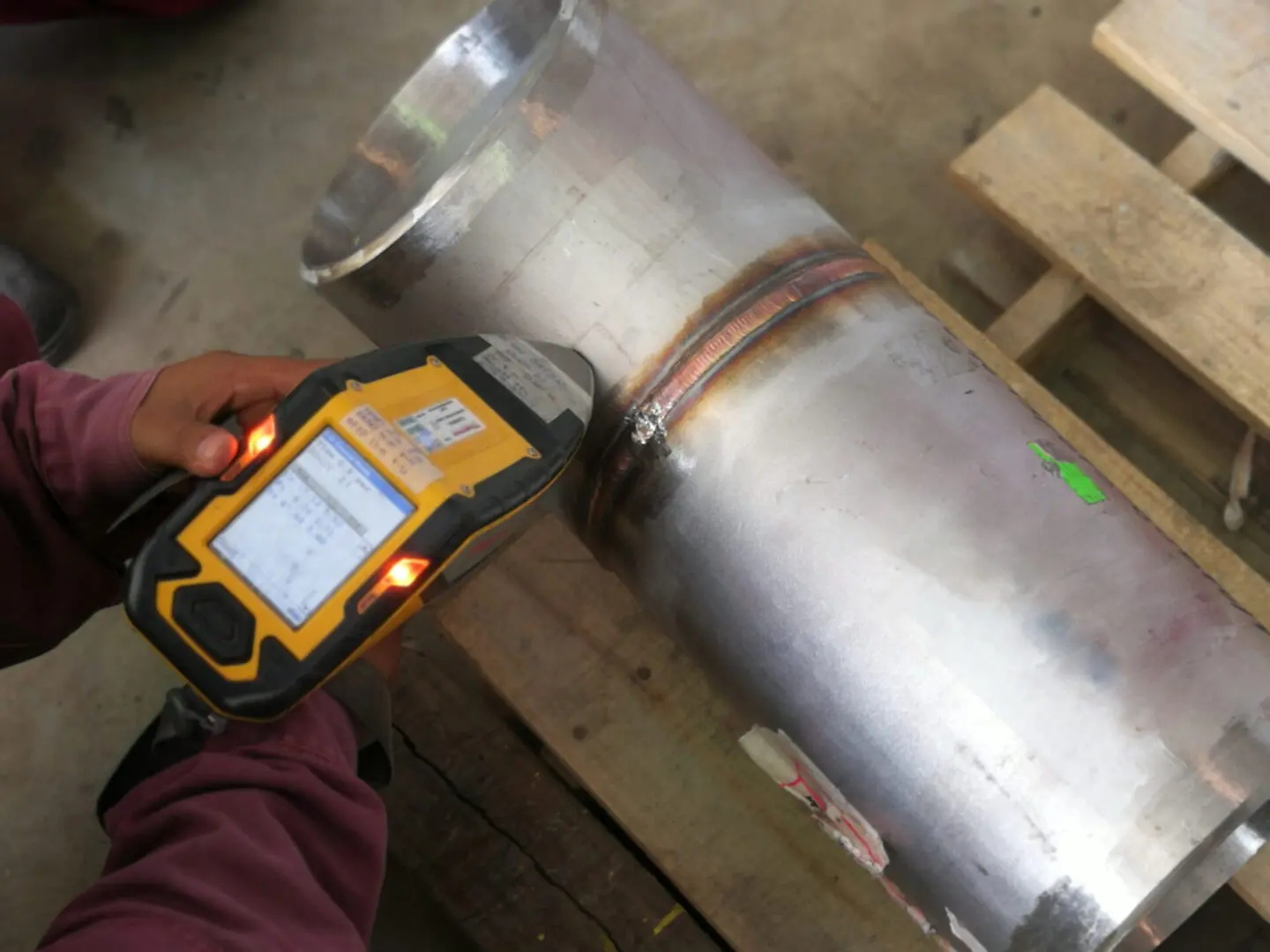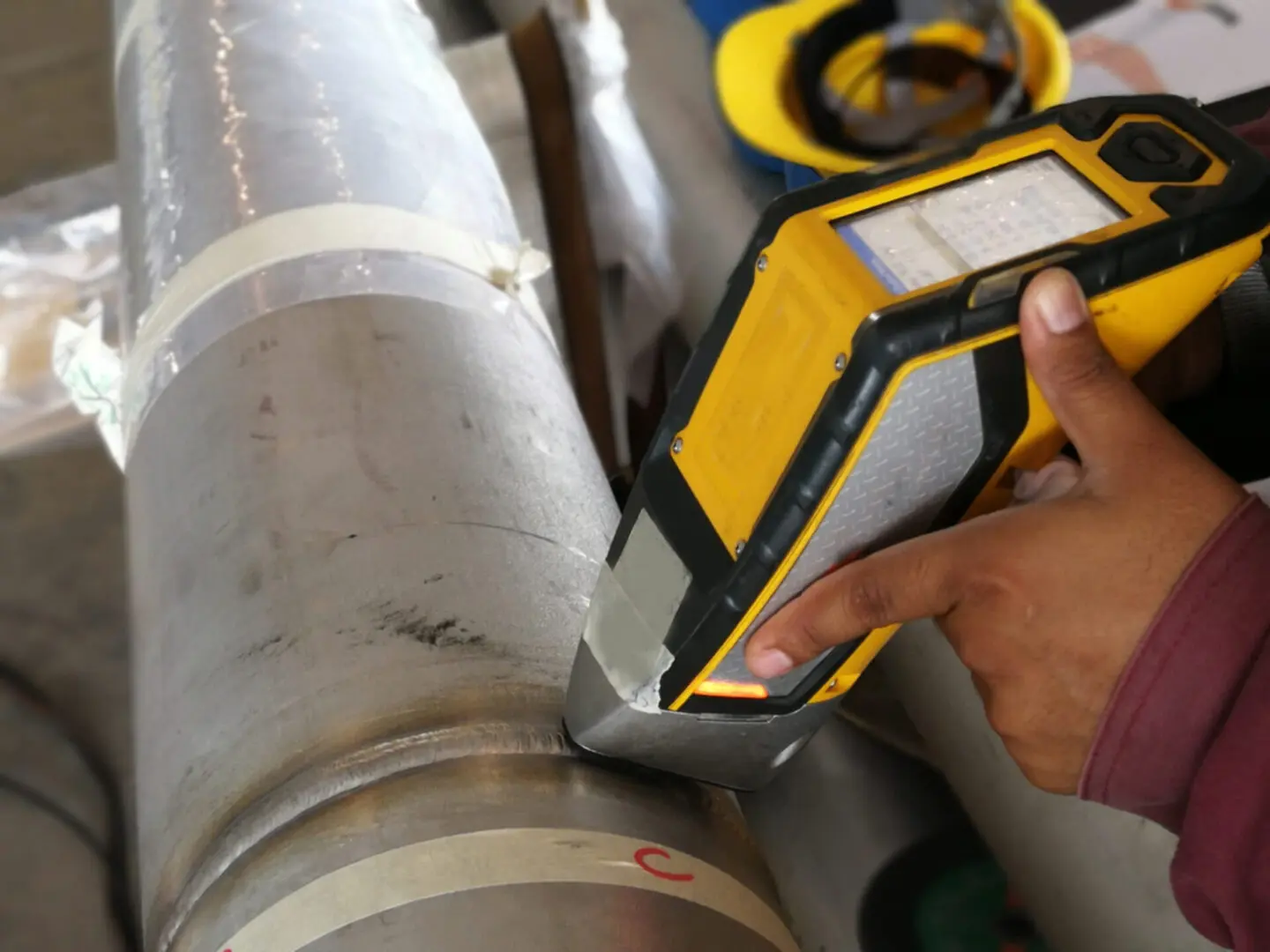Positive Material Identification (PMI)
Positive Material Identification (PMI) is a specialized, non-destructive method for verifying the chemical composition of metals and alloys.
The emphasis on safety and accident prevention has never been greater – and with good reason. According to one study, about 10% of corrosion-related accidents declare the inadequacy of material composition as the key component for failure. We offer Positive Material Identification (PMI) on turbine generator components as a standalone or as part of the general NDE scope of work.
Basic principle of PMI
Understanding the correct percentages of key elements in the component helps to determine the material properties such as corrosion resistance. If a material certificate is missing or it is not clear what the composition of a material is, PMI offers the solution. PMI is widely used for quality control and safety compliance for both production and asset integrity management across many industries including oil and gas, power generation, chemical, pharmaceutical, nuclear, aerospace, and metal fabrication.
Method of PMI
X-Ray Fluorescence (XRF) is the most utilized PMI method. XRF is one of the quickest and most comprehensive methods for Positive Material Identification. XRF’s portability and cost-effectiveness have allowed PMI to be widely used to perform inspection in the field, and the hand-held equipment allows PMI to be performed on-site at the production plant or factory floor.
The handheld XRF instrument scans the material and provides chemical composition and alloy grade name. XRF that contains low radioactive sources (isotopes) or x-ray tubes, works by exposing the material to a flux of x-rays, or low-level radiation. The exposed material reflects the radiation, generating energy. The atoms then absorb the energy and become temporarily excited, and they fluoresce, or emit x-rays. The x-rays emitted by the sample's atoms possess clearly defined energies that are unique to the elements present in the sample. As every element has its own atomic structure, this reflection will generate a different energy level for every element. By measuring the intensity and energy, the XRF instrument can provide qualitative and quantitative analysis. In other words, it can identify the alloy elements, measure the concentration of each and display them on the unit.


